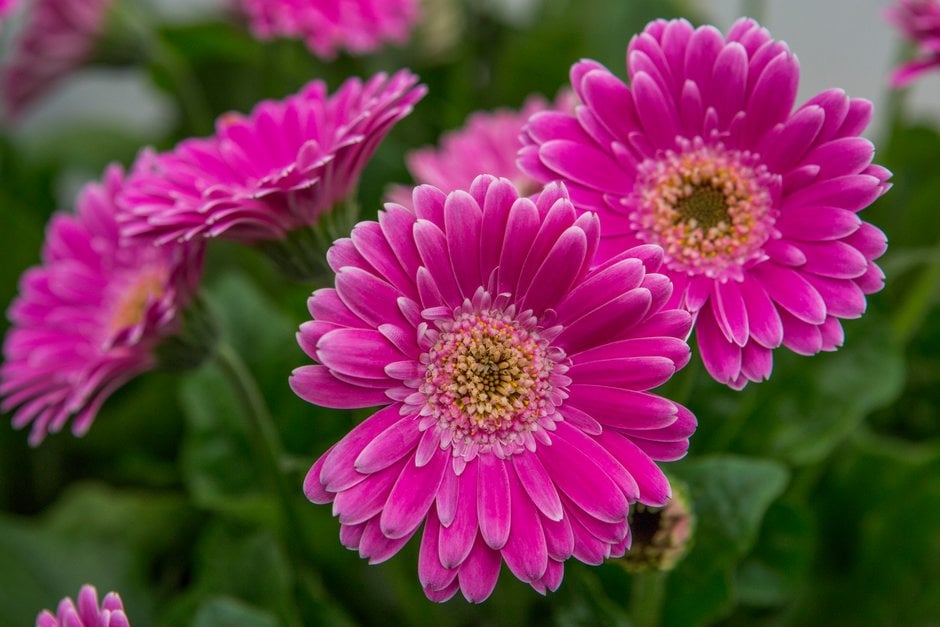Gerbera Garvinea Sweet Surprise ('Garsurprise') (Garvinea Sweet Series)
gerbera [Garvinea Sweet Surprise]
One of the hardier cultivars producing basal rosettes of rich green leaves and bearing very large, orchid-pink double flowers on slender, firm stems from late spring to the first frosts
Size
Ultimate height
0.1–0.5 metresTime to ultimate height
1–2 yearsUltimate spread
0.1–0.5 metresGrowing conditions
Moisture
Well–drainedpH
Acid, Alkaline, NeutralColour & scent
| Stem | Flower | Foliage | Fruit | |
| Spring | Pink | Green | ||
|---|---|---|---|---|
| Summer | Pink | Green | ||
| Autumn | Green | |||
| Winter | Green |
Position
- Full sun
Aspect
South–facing or West–facing
Exposure
Sheltered Hardiness
H3Botanical details
- Family
- Asteraceae
- Native to GB / Ireland
- No
- Foliage
- Semi evergreen
- Habit
- Bushy
- Genus
Gerbera are perennials with basal rosettes of leaves from which emerge hairy stems each bearing a daisy-like flowerhead; flowers can be single or double and in shades of yellow, orange, red, white, pink or purple
- Name status
Trade
How to grow
Cultivation
Grow in fertile well-drained soil in a sheltered position in full sun; ideal for patio containers grown in a peat-free, loam-based potting compost (JI No.2) and may be overwintered under glass in colder areas. See Gerbera cultivation for further information
Propagation
Propagate by division in early spring or propagate by basal cuttings in summer
Suggested planting locations and garden types
- Coastal
- Cottage and informal garden
- Patio and container plants
- City and courtyard gardens
- Flower borders and beds
- Wall side borders
- Cut flowers
Pruning
Deadhead regularly to encourage more flowers
Pests
Glasshouse whitefly, leaf miners and aphids may be a problem
Diseases
May be affected by a leaf spot or root rot
Get involved
The Royal Horticultural Society is the UK’s leading gardening charity. We aim to enrich everyone’s life through plants, and make the UK a greener and more beautiful place.
